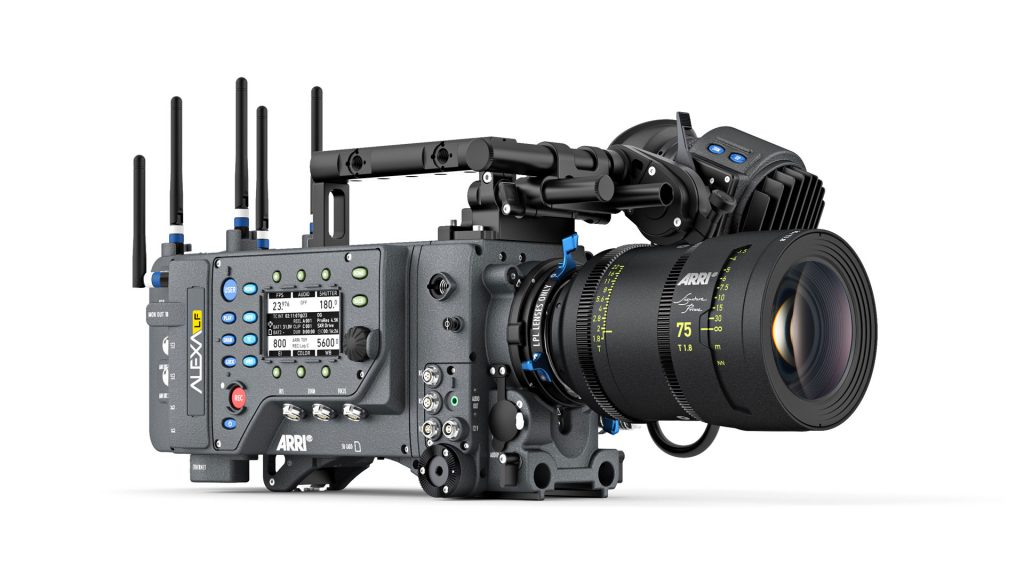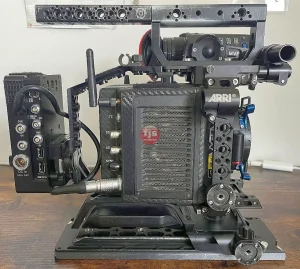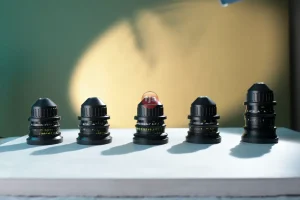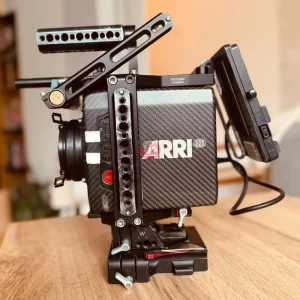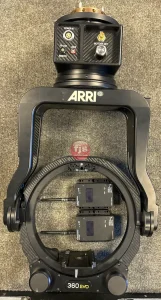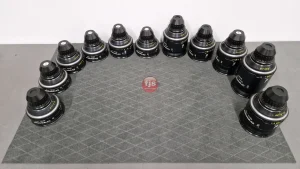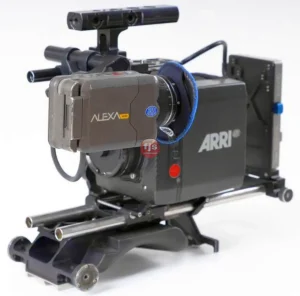Unlock timeless looks without breaking the bank. Vintage lenses offer unique character; costly gear isn’t essential.
Dispelling the Myth: You Don’t Need Pricey Gear for Vintage Lenses
The allure of vintage lenses lies in their ability to inject a distinct aesthetic into your photographs and videos, offering a charm often absent in modern, clinically perfect optics. A pervasive misconception, however, is that venturing into the world of vintage glass necessitates a significant financial outlay on high-end camera bodies and elaborate accessories. This simply isn’t true. The beauty of vintage lenses lies in their remarkable adaptability and often, their inherent affordability. You can absolutely embark on your vintage lens journey without emptying your wallet.
Here’s why getting started with vintage lenses doesn’t demand a hefty investment:
- Affordable Camera Bodies Are Your Best Friends: The rise of mirrorless camera technology has been a game-changer for vintage lens enthusiasts. Entry-level and mid-range mirrorless cameras from brands like Sony (especially their APS-C α6000 series), Fujifilm (X-T and X-A series), Canon (EOS M or R series), and Micro Four Thirds systems (Panasonic Lumix G series, Olympus OM-D E-M series) are ideally suited. Their crucial advantage is a much shorter flange focal distance compared to traditional DSLRs. This allows for straightforward and inexpensive adaptation of a vast array of vintage lenses. You absolutely don’t need a top-tier, full-frame, high-megapixel camera to appreciate the unique rendering of a vintage lens. In fact, the crop factor on APS-C or M4/3 sensors can even provide an interesting magnification effect, extending the effective reach of certain lenses.
- Inexpensive Lens Adapters: The Essential Bridge: This is where the magic happens. Basic mechanical adapters, which simply allow you to physically mount the vintage lens onto your modern camera body, are incredibly affordable. You can often find them for as little as $10 to $50. These adapters are simple, robust rings with no electronic contacts, as vintage lenses communicate purely through mechanical means. While more sophisticated and pricier adapters exist (e.g., those with built-in helicoids for enhanced close focusing, or “speed boosters” that can make your lens wider and brighter), they are by no means necessary for merely using a vintage lens. Start with these simple, effective mechanical adapters, and if your creative needs evolve, you can consider upgrading later.
- Embrace Modern Camera Features for Manual Focusing: One of the primary concerns for newcomers to vintage lenses is the lack of autofocus. However, modern mirrorless cameras come equipped with incredibly helpful tools that make manual focusing not just feasible, but often enjoyable. Features like focus peaking, which highlights in-focus areas with a visible color overlay on your screen or electronic viewfinder (EVF), and magnified view, which allows you to zoom in digitally for precise focus confirmation, are invaluable. These built-in technologies eliminate the need for expensive external monitors or specialized focusing screens often associated with older DSLR or film workflows, making sharp focus easily attainable.
- No Mandatory Gimbals or Elaborate Rigs (To Start): While the compact and often lightweight nature of many vintage lenses makes them excellent candidates for modern stabilization tools like gimbals, you certainly don’t need a complex or expensive rigging setup to begin your vintage lens journey. Many vintage lenses are perfectly balanced for comfortable handheld shooting. For situations requiring more stability, simple and affordable solutions like tripods, monopods, or even just bracing yourself against a stable surface can provide the necessary support for sharper images. Invest in these only if your projects demand them.
- Appreciate Imperfection as Character: Part of the allure of vintage lenses lies in their inherent optical “imperfections.” These can manifest as unique lens flares, a softer contrast, a distinctive swirly bokeh, or subtle color shifts. You don’t need a camera that can technologically compensate for every perceived optical flaw; instead, learn to embrace these characteristics as part of your unique artistic expression. This mindset frees you from the pursuit of clinical “perfection” (which almost always comes with a hefty price tag) and actively encourages creative exploration through the lens’s individual quirks.
Key Features of a Budget-Friendly Vintage Lens Setup
When assembling an affordable setup for your vintage lens adventures, prioritize these features:
- Mirrorless Camera Body: This is the cornerstone due to its short flange focal distance, facilitating easy and wide-ranging lens adaptation.
- Simple Mechanical Lens Adapter: The most cost-effective way to bridge your vintage lens to your modern camera.
- Focus Peaking: A vital in-camera aid that visually confirms sharp focus.
- Magnified View: Another crucial in-camera feature for pinpoint manual focusing.
- In-Body Image Stabilization (IBIS – if available): A significant bonus, as many vintage lenses lack optical stabilization. IBIS provides crucial stability for handheld shooting, compensating for camera shake.
- Intuitive Manual Controls: A camera body with easily accessible and assignable dials/buttons for aperture, ISO, and shutter speed complements the fully manual operation of vintage lenses.
Benefits of Getting Started Affordably
Embracing a budget-conscious approach to vintage lenses offers a plethora of advantages:
- Low Barrier to Entry: You can experiment with different focal lengths, aperture characteristics, and lens “looks” without committing a substantial amount of money upfront.
- Unleashed Creative Freedom: Not being weighed down by the perceived need for expensive gear often fosters a more experimental, less risk-averse, and ultimately more creative shooting style.
- Enhanced Learning Opportunity: Using manual-only lenses forces you to deeply understand the fundamentals of exposure, composition, and manual focusing, refining essential photographic skills.
- Cultivate a Unique Aesthetic: Achieve a distinctive visual style that stands apart from the often uniform, “perfect” images produced by contemporary, high-priced optics.
- Sustainable and Eco-Friendly Choice: By reusing and repurposing existing optical tools, you contribute to a more circular economy and reduce your environmental footprint.
- Expand Your Lens Collection Smartly: The money saved on the camera body and accessories can be strategically reinvested into acquiring more diverse and interesting vintage lenses, building a versatile kit over time.
Conclusion
The allure of vintage lenses – their unique character, historical significance, and often beautiful optical rendition – is undeniable. Crucially, tapping into this creative wellspring does not demand a prohibitive investment in expensive camera bodies or complex rigging. With an affordable mirrorless camera as your foundation, coupled with simple, inexpensive adapters and the powerful manual assist features inherent in modern digital cameras, anyone can embark on a fulfilling journey into the rich and rewarding world of vintage glass. Discard the myth that costly equipment is a prerequisite; your wallet, your creativity, and your unique visual style will undoubtedly flourish.
Questions and Answers
Q1: What’s the absolute minimum I need to use a vintage lens?
A1: An affordable mirrorless camera body and the correct, inexpensive mechanical adapter for your vintage lens’s mount. That’s it to get started.
Q2: Will I lose image quality using a cheap adapter?
A2: For purely mechanical adapters, no. They are just a spacer. Optical adapters (like speed boosters or those correcting for flange distance issues) can affect quality, but basic adapters won’t.
Q3: Can I get good results with vintage lenses on entry-level cameras?
A3: Absolutely! The quality of the image largely comes from the lens’s optics and your photographic skill. Entry-level cameras provide all the necessary features (manual controls, focus peaking) to make vintage lenses shine.
Q4: Is it hard to learn manual focus?
A4: Modern camera features like focus peaking and magnified view make it much easier than in the film era. It takes practice, but many photographers find it a more deliberate and rewarding way to shoot.
Q5: What are the best vintage lens mounts for beginners?
A5: M42 (screw mount) lenses are very common, affordable, and easy to adapt. Contax/Yashica (C/Y) and Nikon F (pre-AI or AI-S) lenses are also excellent choices with good availability and adaptability.

